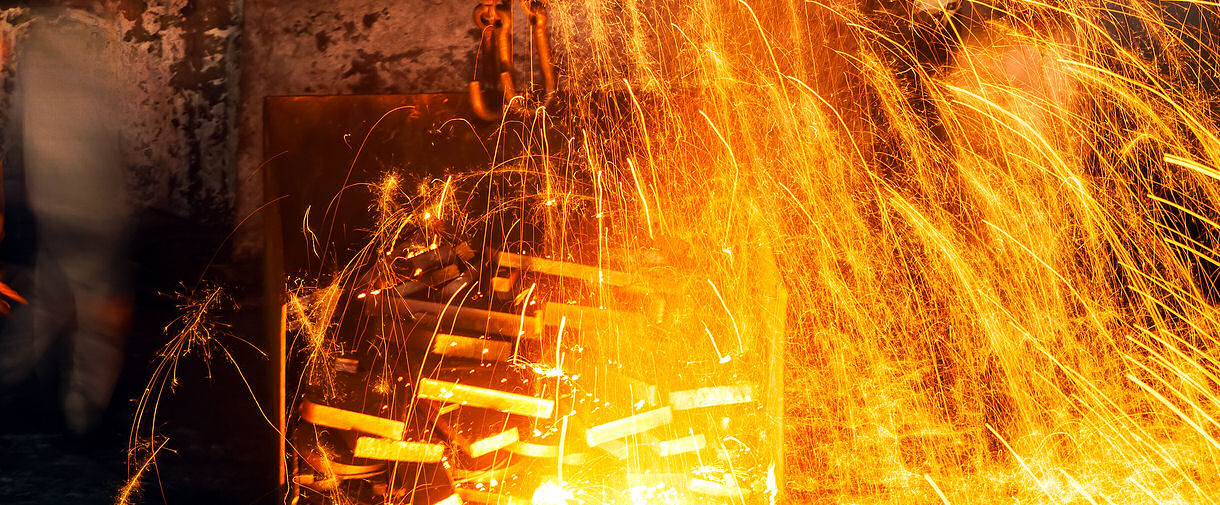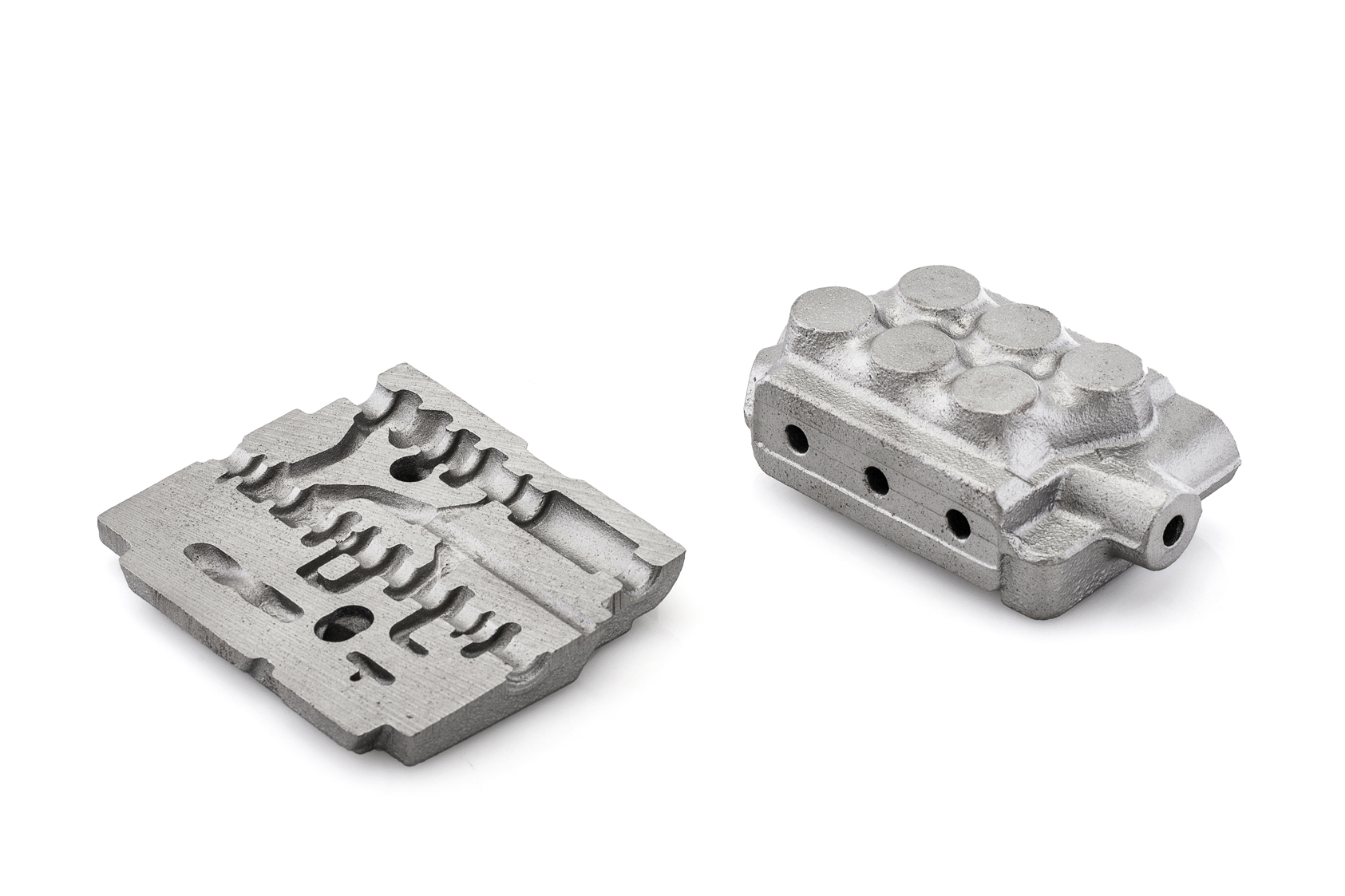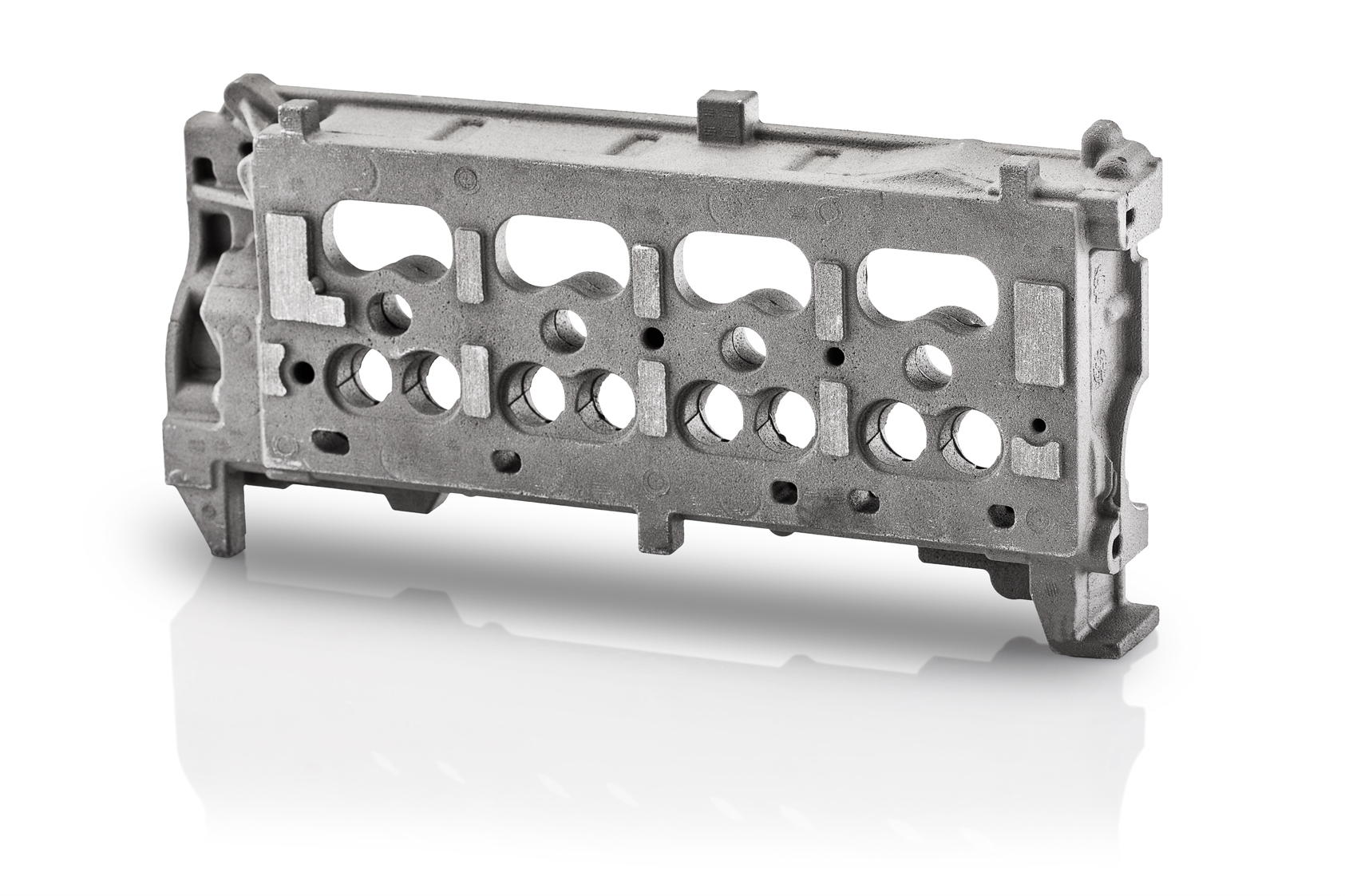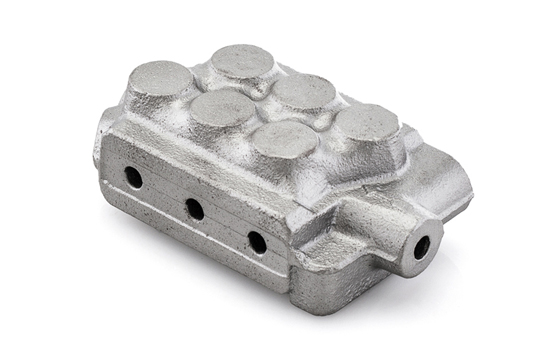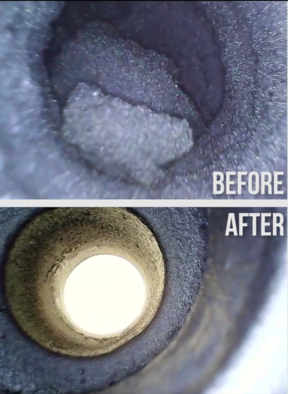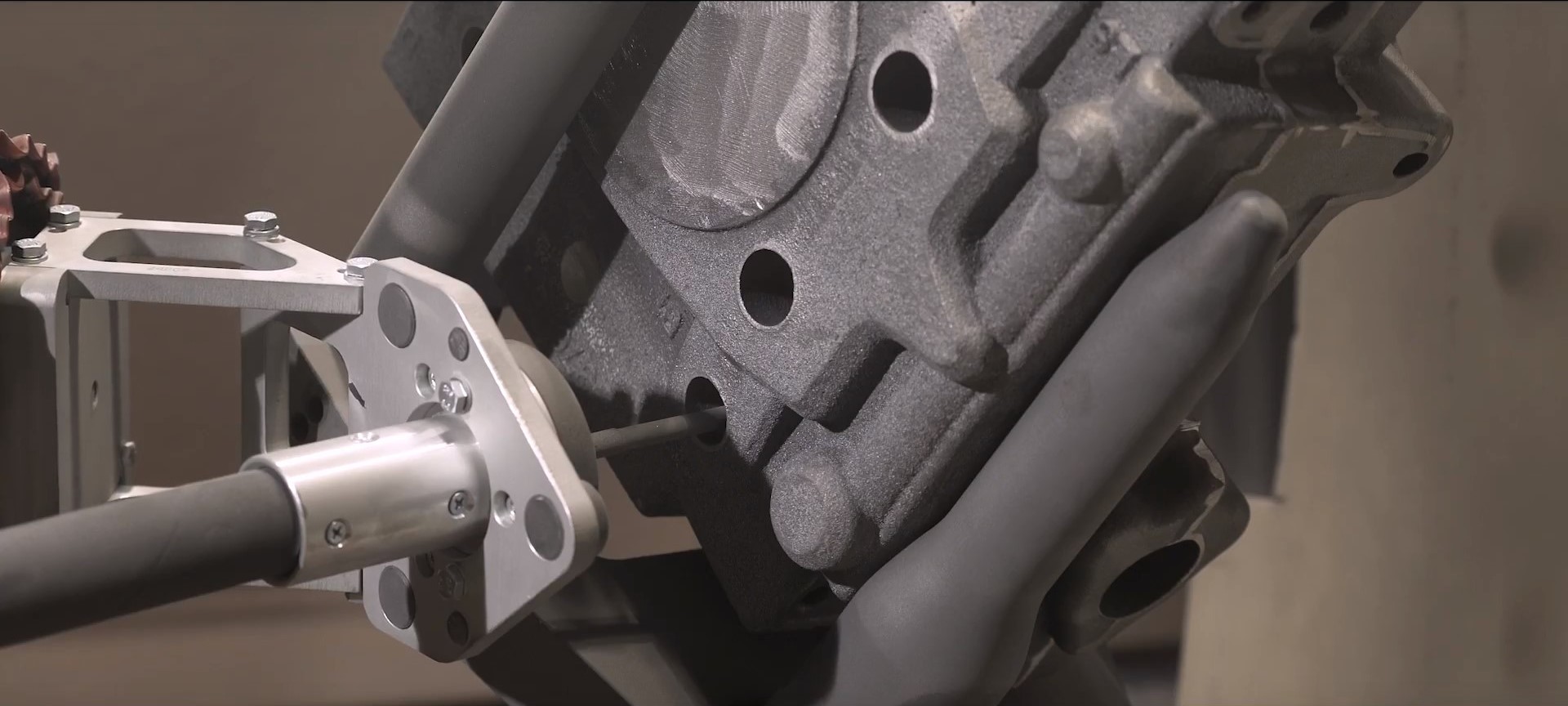RESULT-BASED APPROACH OUR SOLUTION The foundry industry is developing continuously. In order to respond effectively to market demand, castings must not simply be well made, but must also be delivered well cleaned and finished. The residual removal within the channels is an explicit request of the end user. If such residues were to circulate inside the system during its final use, they could lead to damage and production stop of the entire machinery. To meet the demand for higher cleaning quality, the process often requires a double treatment; first high-pressure blowing and then dedicated shot-peening. So far, these phases have been carried out manually, in two distinct times with different nozzles and in dedicated machines. Norblast designed a solution to perform both high-pressure blowing and dedicated shot peening inside the same cabin and within the same process stage. Inside the cabin the robot provides a preliminary roughing treatment with compressed air, and, with no operator needed, changes the nozzle automatically and also provides finishing until the complete removal of residues inside the casting. The casting change time has only a marginal impact on the production cycle as it is carried out during the process phase. This solution is designed to be integrated into a 4.0 production logic.
Certain processes are extremely complex, yet market demands make it essential to process high volumes and ensure high reliability. We develop customized machines for companies in the foundry industry, with the goal of providing comprehensive solutions that offer a competitive edge thanks to process accuracy, automation and repeatability.
Designing shot-peening and sandblasting machines and processes for the foundry industry means tackling the complex geometry of the parts to be processed and ensuring perfect results.
Machines need to guarantee high accuracy and full repeatability for typical industry processes, including treatment of hydraulic distributors or engine heads, removal of wax and casting residues and deburring and aesthetic treatments for aluminum diecasts.CASE STUDY
Jet and/or melting internal channel cleaning
